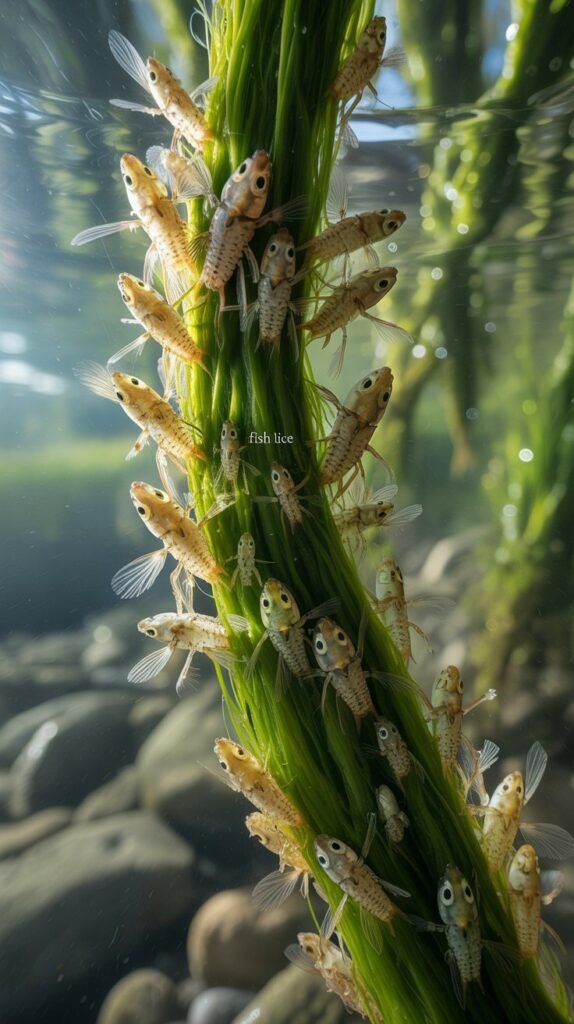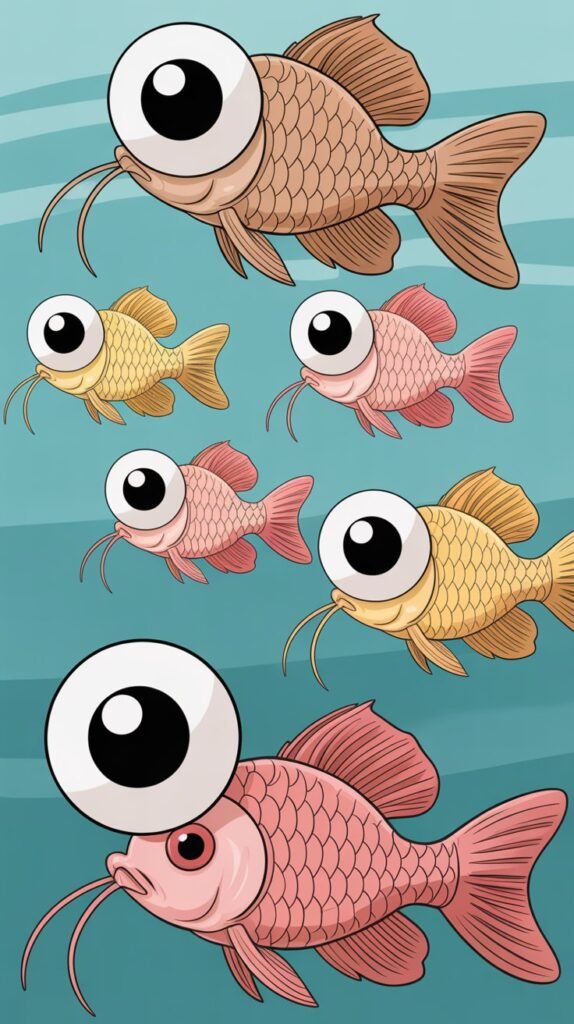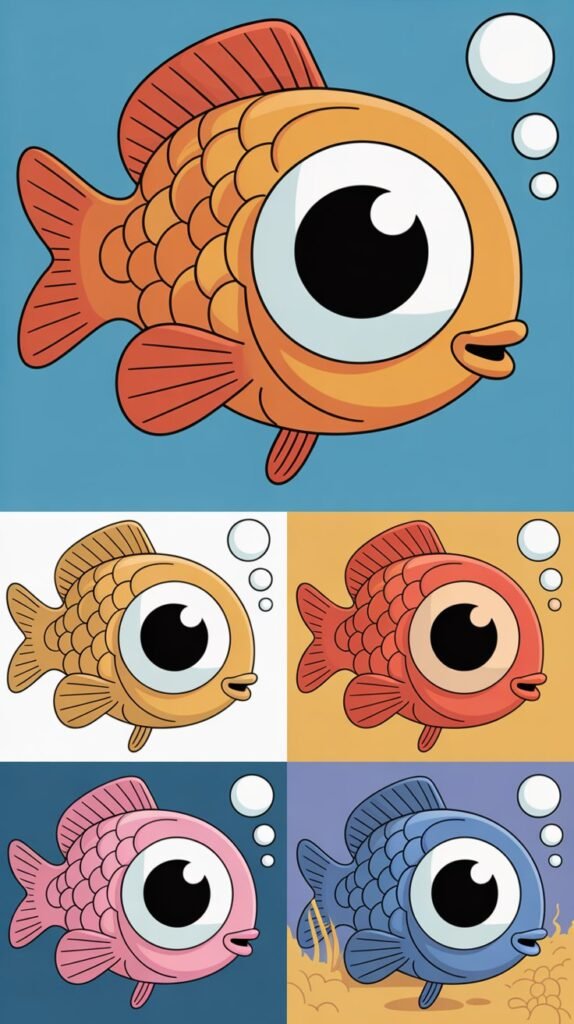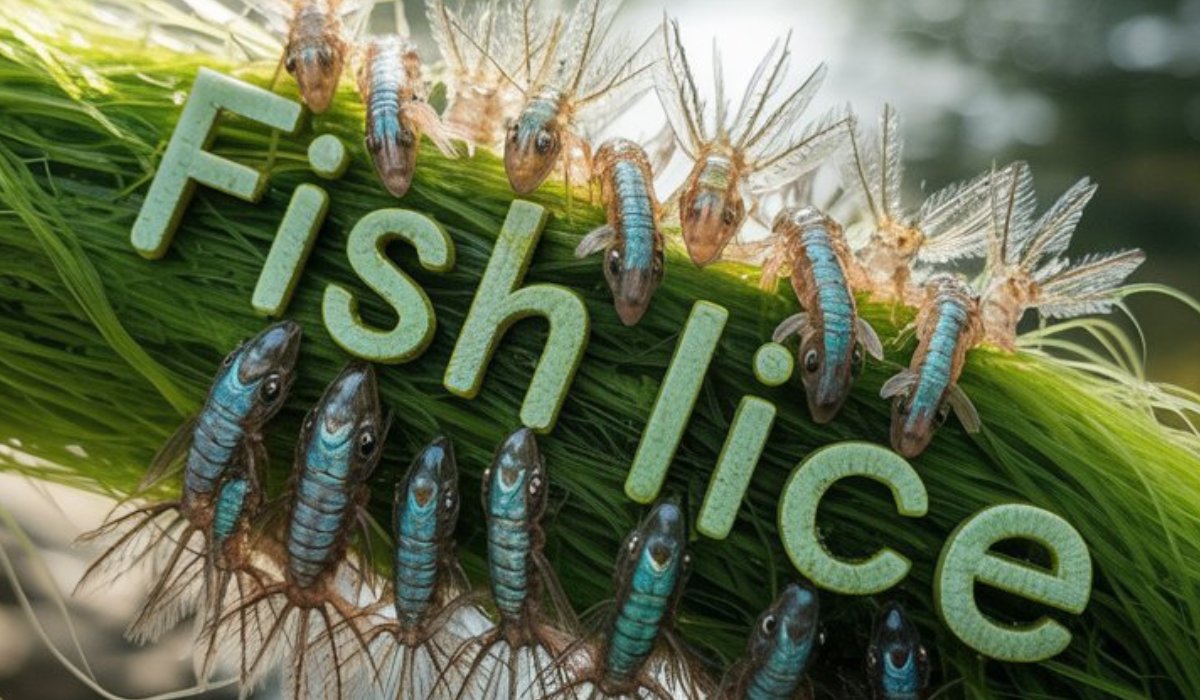Aquarium and pond keepers often face different types of parasitic infestations, and one of the most troublesome is fish lice. These parasitic crustaceans attach themselves to the body, fins, or gills of fish, feeding on their blood and body fluids. The result is irritation, stress, infection, and sometimes even death if left untreated. Fish lice, scientifically known as Argulus, are visible to the naked eye, making them one of the few parasites that hobbyists can easily identify.
This comprehensive guide explores everything about fish lice—from causes and symptoms to treatment methods and prevention strategies. Whether you keep koi, goldfish, guppies, or other freshwater species, understanding this parasite will help you protect your aquatic pets from harm.
What Are Fish Lice?
Fish lice are ectoparasitic crustaceans belonging to the genus Argulus. Unlike microscopic parasites such as ich or gill flukes, fish lice are relatively large (5–10 mm in length) and can often be seen crawling on the fish’s skin or swimming in the water.
They are oval, flat-bodied, and usually greenish or brownish in color. Fish lice have specialized mouthparts that allow them to pierce the skin and suck blood, which not only weakens the fish but also exposes it to secondary bacterial and fungal infections.
Life Cycle of Fish Lice

Understanding the life cycle of fish lice is key to effective treatment:
- Egg Stage
Female lice lay eggs on hard surfaces such as rocks, plants, or decorations. Each female can produce hundreds of eggs. - Larval Stage
After hatching, the larvae must quickly find a host fish to survive. They are free-swimming for a short period. - Juvenile and Adult Stage
Once they attach to a fish, they mature into adults and begin feeding. Adults live by sucking blood and reproducing, continuing the cycle.
The entire life cycle can take 30–60 days, depending on water temperature, which means infestations can escalate quickly in warm conditions.
Causes of Fish Lice Infestation
Fish lice infestations usually occur due to the following reasons:
- Introduction of infected fish
New fish brought into the aquarium or pond without proper quarantine may carry lice. - Contaminated water or equipment
Nets, plants, or decorations taken from infected ponds or aquariums can spread lice. - Wildlife contamination
Birds or amphibians visiting outdoor ponds may carry fish lice eggs, spreading them between locations. - Poor quarantine practices
Failing to isolate new arrivals before mixing them with established fish populations increases the risk of outbreaks.
Symptoms of Fish Lice in Fish
Fish lice are irritating parasites, and infested fish will display clear behavioral and physical symptoms:
Behavioral Symptoms:
- Constant scratching or flashing against rocks or decorations.
- Restlessness and erratic swimming.
- Frequent attempts to jump out of the water in outdoor ponds.
- Reduced feeding activity due to stress.
Physical Symptoms:
- Visible round parasites (greenish or brownish spots) attached to the skin.
- Red sores, ulcers, or lesions where lice have bitten.
- Frayed fins or tissue damage.
- Excess mucus production on the body.
- Signs of secondary infections (fungal or bacterial).
If left untreated, heavy infestations can cause anemia, weakened immunity, and high mortality rates.
Diagnosis of Fish Lice
The advantage of dealing with fish lice compared to microscopic parasites is their visibility. Diagnosis can be made through:
- Visual Inspection
Look for flat, oval parasites crawling on the skin or gills. - Observation of Behavior
Scratching, flashing, and lethargy are strong indicators. - Microscopic Examination
In some cases, a microscope can be used to confirm the species, but it is not always necessary.
Treatment of Fish Lice

Effective treatment requires addressing both the parasites on the fish and their eggs in the environment. Here are proven methods:
1. Manual Removal
- In small infestations, fish lice can be removed manually using tweezers.
- Fish should be gently netted and restrained before removal.
- Antiseptic treatments should be applied to wounds to prevent infections.
2. Salt Baths
- A short salt bath (using aquarium salt) can help dislodge parasites and soothe irritated skin.
- Typical dosage: 10–30 grams of salt per liter of water for 30 minutes (depending on fish tolerance).
3. Chemical Treatments
- Organophosphates (e.g., Trichlorfon, Dylox): Effective against adult lice but must be used carefully due to toxicity risks.
- Potassium Permanganate: Used for pond treatments to kill free-swimming larvae and juveniles.
- Diflubenzuron and Lufenuron: Inhibit parasite molting and reproduction.
Always follow manufacturer’s instructions when using chemicals, as overdosing can harm fish and beneficial bacteria.
4. Environmental Control
- Scrub pond walls, remove debris, and disinfect equipment to eliminate eggs.
- Maintain good water quality to reduce stress on fish and improve recovery.
5. Quarantine
- Infected fish should be isolated and treated separately.
- New fish should always be quarantined for at least 2–4 weeks before introducing them into the main aquarium or pond.
Prevention of Fish Lice
Prevention is always better than cure. Steps include:
- Quarantine new arrivals before mixing with existing fish.
- Disinfect equipment such as nets, plants, and decorations before use.
- Regular health checks for early detection of parasites.
- Maintain water quality to reduce fish stress and increase immunity.
- Control wildlife access in outdoor ponds to minimize contamination.
- Routine parasite treatments in ponds with recurring issues.
Fish Species Commonly Affected
Fish lice affect a wide variety of species, including:
- Goldfish and koi (most common in ponds).
- Guppies, mollies, and tetras in aquariums.
- Carp and other freshwater pond fish.
- Occasionally found on marine species, though less common.
Long-Term Impact of Fish Lice Infestation
If untreated, fish lice infestations can lead to:
- Severe skin damage and open sores.
- Secondary infections (fungal, bacterial, or viral).
- Stress-related illnesses in fish.
- Population decline in heavily infested ponds.
- Weakened immune system, leaving fish vulnerable to other parasites.
Natural and Home Remedies

Some fish keepers prefer less chemical-intensive methods:
- Garlic-based treatments: Known to boost immunity and deter parasites.
- Neem extracts: Sometimes used in ponds to control parasites naturally.
- Improved water circulation and filtration: Reduces free-swimming larvae survival.
While these remedies may help, they are not always 100% effective for severe infestations and should be combined with proven treatments.
Frequently Asked Questions (FAQs)
1. What are fish lice?
Fish lice (Argulus) are parasitic crustaceans that attach to fish, feeding on their blood and body fluids.
2. How do fish get lice?
Fish lice are usually introduced through infected new fish, contaminated plants, equipment, or wildlife.
3. Can I see fish lice with the naked eye?
Yes, they are visible as small oval parasites (5–10 mm) attached to the skin, fins, or gills.
4. What are the symptoms of fish lice?
Scratching, flashing, lethargy, sores, ulcers, and visible parasites are common signs.
5. How do I treat fish lice?
Treatment includes manual removal, salt baths, and chemical treatments such as trichlorfon, potassium permanganate, or diflubenzuron.
6. Are fish lice dangerous to humans?
No, fish lice do not affect humans, but they can cause severe harm to fish.
7. How long do fish lice live?
The life cycle lasts about 30–60 days, depending on water temperature.
8. Can fish lice kill fish?
Yes, severe infestations can cause death due to stress, blood loss, and secondary infections.
9. How can I prevent fish lice?
Quarantine new fish, disinfect equipment, and maintain good water quality to reduce risks.
10. Do fish lice affect pond and aquarium fish equally?
They are more common in outdoor ponds but can also infest aquarium fish if introduced.
Conclusion
Fish lice are a visible yet highly damaging parasite that can quickly spread in aquariums and ponds. They cause stress, wounds, and secondary infections, threatening the health of fish populations. Fortunately, with proper diagnosis, timely treatment, and preventive measures such as quarantine and equipment disinfection, fish lice can be effectively controlled.
Aquarists and pond keepers should remain vigilant, as early detection and proactive care are the best defenses against these parasites.

